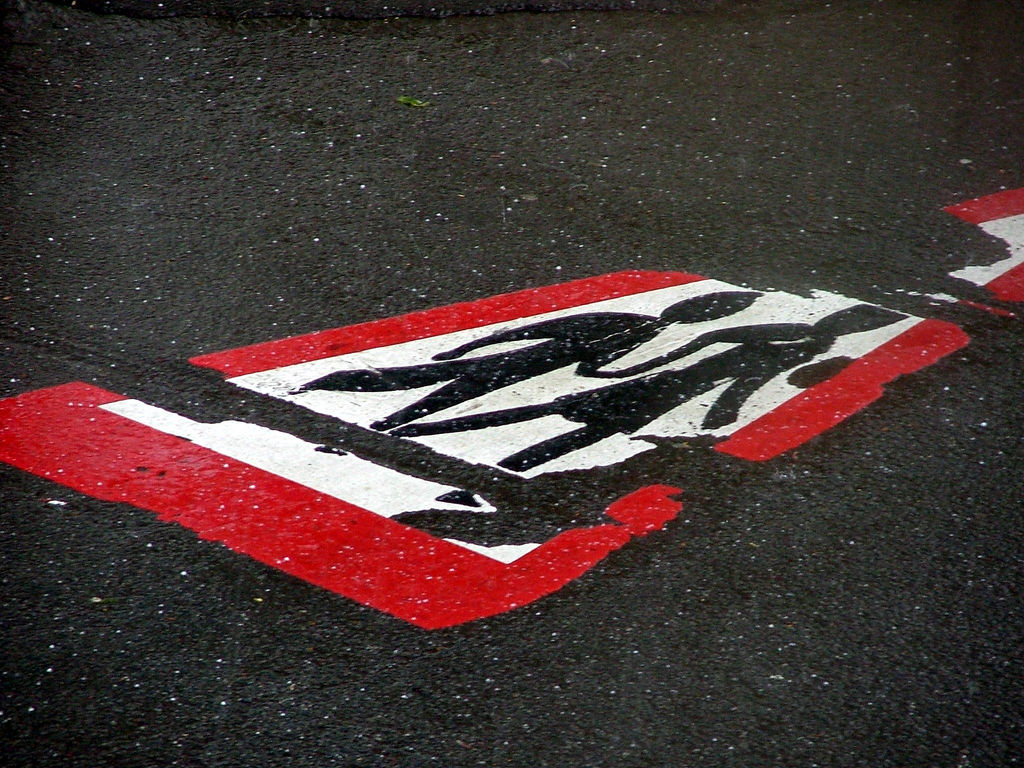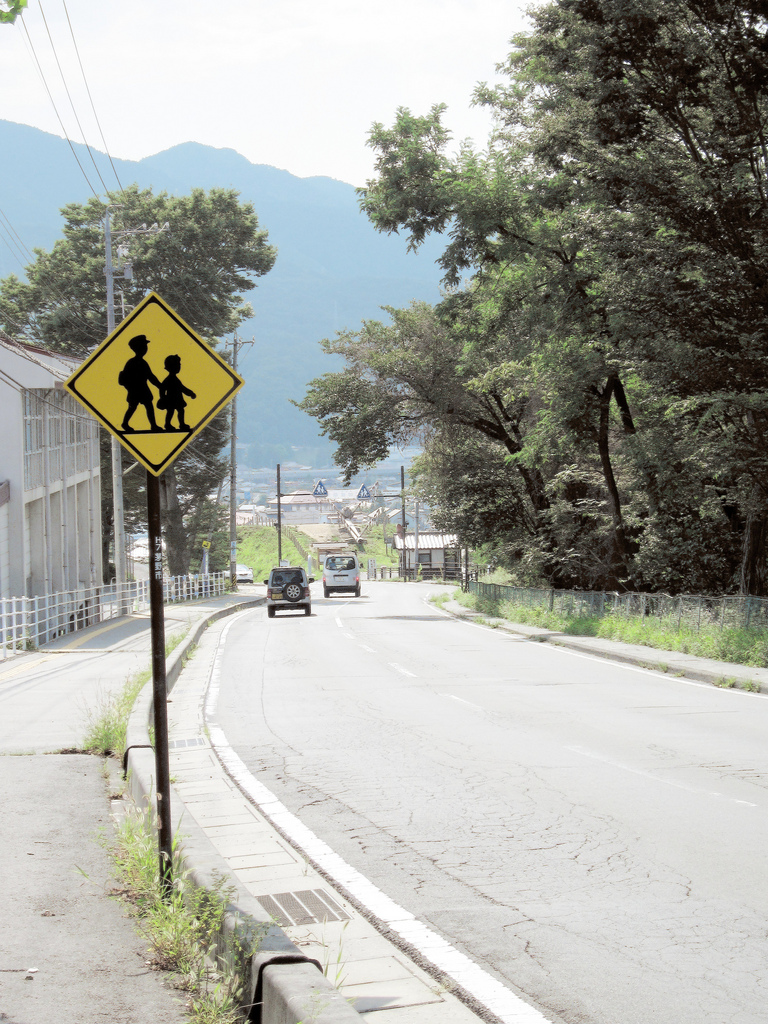Cars pose greatest danger to NYC children’s safety
From deadly shark attacks to gunfire, many parents’ fears for their children are terrifying but unlikely, while a very real threat passes by nearly unregistered: traffic accidents. In bustling cities rife with traffic — such as New York — the biggest threat to children’s safety is found right on the road. (Case in point? Car crashes kill more people than guns do, in New York.) As WNYC reports, approximately 1,800 children are hit by cars and trucks in New York City annually, according to state Department of Motor Vehicles information. In fact, school-aged children comprise nearly a third of all of New York City’s pedestrian accidents, before and after school (from 6:30 to 8:30 a.m. and 2:30 to 4:30 p.m. on school days).

via Andrew Mason.
WNYC analyzed data on traffic crashes that injured a child in 2009, 2010, 2011, and from January of 2012 to April 2012 (the most recent available) to try to draw conclusions for how children are injured by cars, and how to prevent injuries and fatalities. Their analysis found that child pedestrians are injured in different ways and under different circumstances than their adult counterparts. One obvious but key difference is that adults are most often hit from 5 p.m. to 8 p.m., while children are more likely to be hit right before and right after school, and during school months. During those time frames, children injured by traffic are more likely than adults to be hit when not following crossing signals.
While a mere nine percent of adults who were hit and injured during these times of day were in a crosswalk against the signal, the figure for children jumps to almost 20 percent. A greater percentage of kids who are struck are hit in the middle of a street. Stepping out from behind parked cars resulted in seven percent of children’s injuries, compared to 3.5 percent for adults. Another factor: Because of their young age and still-in-progress development, kids are also not yet “as good as adults at seeing speeding cars,” which means they are more likely to be hit by cars that they did not see coming.
As Charles DiMaggio, an associate professor at Columbia University, tells WNYC, “Kids really are the most unpredictable pedestrians, which puts the responsibility for their safety much more squarely on the shoulders of adults and drivers.” WNYC suggests that, in addition to traditional measures such as educating kids (“Look both ways!”), and crossing guards’ and parents’ guidance, traffic and speeding enforcement (such as through the use of red light cameras) and intersection redesign are necessary to increase children’s safety.

via urawa.
One federal program, Safe Routes to School, affected a 44 percent drop in schoolchildren traffic injuries through teaching kids about safety, repainting crosswalks, adding lighting, signage, and speed bumps, and other improvements. Unfortunately, however, the program’s funding was recently cut. “The good news,” advocacy group Transportation Alternatives’ Juan Martinez tells WNYC, “is that these crashes are preventable, and we know how to prevent them.” Targeting speeders, and redesigning crosswalks with pedestrians in mind are two proven effective ways to bring down the injury rate among pedestrians — young and old alike. In the meantime, parents would do well to consider, and plan for, the everyday danger posed by the ordinary yet powerful vehicles on our roads.
Category: Pedestrian safety, Resources
















Comments (1)
Sites That Link to this Post